Committed to Accountability and Transparency
Asheville Area Habitat for Humanity has attained the coveted 4-star rating from Charity Navigator! This highest possible rating verifies that Asheville Habitat adheres to sector best practices, executes its mission in a financially efficient way, and has strong financial health and a commitment to accountability and transparency.
Since 1983, we have offered affordable homeownership and home repair services to qualified Buncombe County individuals and families who earn 30-70% of Area Median Income (AMI). Asheville Habitat has built more than 300 new houses and repaired 200 existing homes, helping nearly 1,400 adults and children build a better future.
Since 2002, using objective, data-driven analysis, Charity Navigator has awarded only the most fiscally responsible organizations a 4-star rating. Charity Navigator President and CEO Michael Thatcher noted, “Attaining a 4-star rating verifies that Asheville Area Habitat for Humanity exceeds industry standards and outperforms most charities in its area of work. This exceptional designation from Charity Navigator sets Asheville Habitat apart from its peers and demonstrates to the public its trustworthiness. Approximately only a quarter of rated charities achieve this distinction!”
“It is important that our donors know we are superior stewards of their funds and this 4-star Charity Navigator rating provides them with that level of confidence,” added Kit Rains, Asheville Habitat’s Development Director.
If you’re interested in getting involved with our work, please click here.
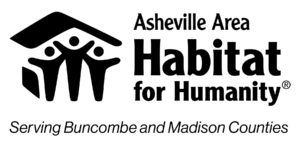
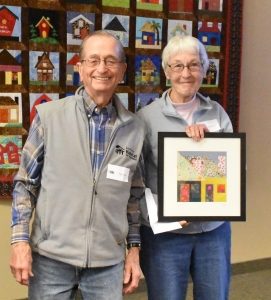
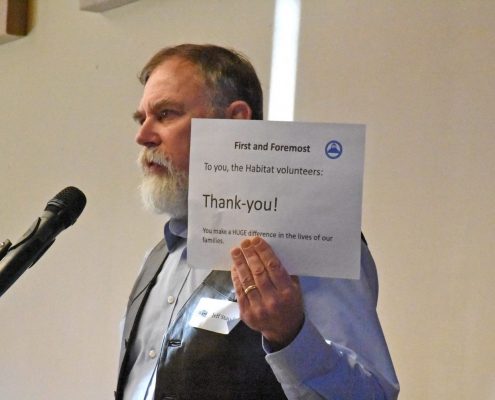 irector for the City of Asheville, who was able to put Habitat’s contributions into the larger affordable housing context. He expressed the City’s enthusiasm for Habitat’s upcoming higher density neighborhood in West Asheville (currently referred to as Cedar Hill). Staudinger also referenced statistics from the
irector for the City of Asheville, who was able to put Habitat’s contributions into the larger affordable housing context. He expressed the City’s enthusiasm for Habitat’s upcoming higher density neighborhood in West Asheville (currently referred to as Cedar Hill). Staudinger also referenced statistics from the 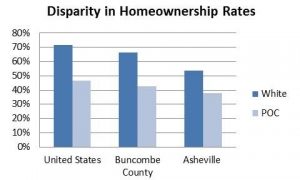
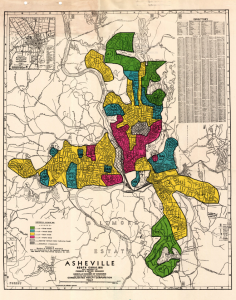
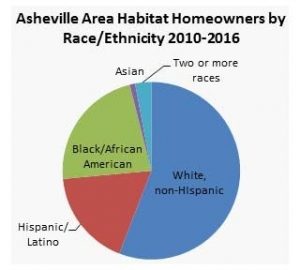 Habitat creates a way for households facing economic barriers to achieve homeownership and begin to close the wealth gap, but we can’t do it alone. To achieve equity in rates of homeownership nearly 3,000 additional households of color in Buncombe County will need the opportunity to become homeowners. To achieve this scale, we will need many more lenders to adopt policies that help households of color overcome historical barriers to mortgage loans. We need to grow housing and financial counseling opportunities to help aspiring homebuyers become “mortgage ready”. We need more affordable rental options and tenant advocacy so that renters have the stability needed to save and prepare for future ownership. Finally, we need home repair and foreclosure prevention assistance to help existing homeowners to remain at home. In short, it will take everyone committing to give our time, our financial support, and our voices to advance the dream of equality of opportunity for all our neighbors regardless of race.
Habitat creates a way for households facing economic barriers to achieve homeownership and begin to close the wealth gap, but we can’t do it alone. To achieve equity in rates of homeownership nearly 3,000 additional households of color in Buncombe County will need the opportunity to become homeowners. To achieve this scale, we will need many more lenders to adopt policies that help households of color overcome historical barriers to mortgage loans. We need to grow housing and financial counseling opportunities to help aspiring homebuyers become “mortgage ready”. We need more affordable rental options and tenant advocacy so that renters have the stability needed to save and prepare for future ownership. Finally, we need home repair and foreclosure prevention assistance to help existing homeowners to remain at home. In short, it will take everyone committing to give our time, our financial support, and our voices to advance the dream of equality of opportunity for all our neighbors regardless of race.